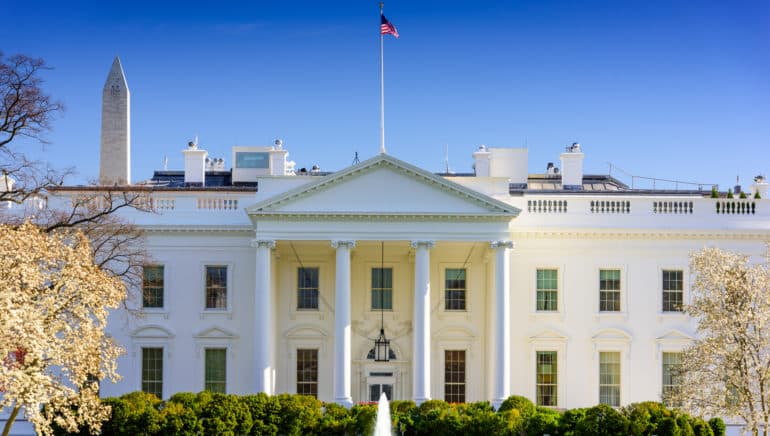 Author: Felix Dornaus, Senior Fundmanager
Author: Felix Dornaus, Senior Fundmanager
The Trump administration should be keeping the financial markets on their toes in the coming weeks. Yet again, the issue is the government debt which will soon reach its statutory maximum.
The USA imposed a maximum amount of debt, or a debt ceiling, a few years ago (currently USD 19,900bn). Up to this threshold, the government can independently decide as and when it wishes to take out loans to fund expenditures within the annual federal budget laws. This would not be a problem, because in the past the debt ceiling would have usually been raised in order for the USA to be able to pay its bills.
Moratorium on expenditures: no money for civil servants
In 2013 the Democrats under then-President Obama and the Republicans were at each others’ throats about this issue. This resulted in a moratorium of expenditures that lasted a few days and resulted in a government shutdown. This means only the most important expenditures were approved, museums remained closed, numerous civil servants had to wait for their wages, and some 800,000 of them were furloughed. The services of non-essential organisations/institutions funded by the state were reduced or even discontinued. This affected for example certain healthcare institutions and internal revenue offices.
When exactly the USA will be running out of money is subject to guesswork at best. But without a deal between the parties involved in this situation, we might be there between the end of September and the middle of October. The summer break of the US Congress will end on 5 September, at which point the heated phase of negotiations should be kicking off. And there is not much time to reach an agreement.
Uncertainty on the bond markets
The uncertainty has already caused short-term US Treasury bonds falling due in October to underperform vis-à-vis those that expire in November. The bonds maturing in October recorded an increase in yield to about 1.04%, the highest rate since 2008.
We remember 2013: what happened then?
10Y treasury bonds: After a high of about 3% on 5 September 2013, the yield fell by about 50bps (100bps = 1%) during the government shutdown (30 September to 16 October 2013). It took the yield until the end of December to climb back to 3%.
Equities: From 18 September 2013 to 8 October 2013, the Standard & Poors index dropped by about 75 points (i.e. -4.3%) but did recover more quickly and had recovered the losses by 17 October 2013.
US dollar: From 5 September 2013 to 22 October 2013 (i.e. the starting point of the recovery), the Bloomberg USD Spot index lost about 3.8%.
US O/N repo rate: Increase of about 0.05% to 0.23% (from the beginning of September to the middle of October 2013).
No deal yet
The leaders of the Republican Party are in favour of passing a “Clean Debt Ceiling Bill”, i.e. one without expenditure or debt reforms as condition. Although the Republicans hold the majority both in the House of Representatives and the Senate, they will need votes from the Democrats for their plans. The reason is obvious: many Republicans are fed up and are against the official party line of increasing the debt ceiling yet again (net). They have tied their possible yes-vote to a tax reform. After all, some of them were not particularly pleased with this sort of situation under Obama either. The Democrats seem to tend towards an unconditional increase of the debt ceiling. In order to secure funding for the wall on the Mexican border, President Trump wants to legally tie it to the discussion about the debt ceiling. Otherwise he has threatened to put in a veto, which would cause the aforementioned shut-down.
Harvey as catalyst – short-term increase of the ceiling as solution?
As is often the case in difficult situations, things turn out differently than expected. The terrible hurricane Harvey, which carved a path of devastation through the country and caused previously unseen floods and destruction in Texas, might possibly lead the opposing parties to reach across the aisle. Nobody wants to be politically associated with the partial suspension of public services, especially when we are talking about the urgent transfer of aid payouts for the victims of the hurricane. Therefore, the debt ceiling might be raised sooner than expected, for the time being temporarily until the end of 2017. This would give the Congress and Trump more time to negotiate a sustainable solution.
Complete default unlikely but not entirely impossible
A complete default is unlikely, but cannot be ruled out. If it did happen, one would have to analyse whether the situation at hand were only a temporary disruption like in 2013 or whether the governability of the United States were sustainably and critically defunct. In such a case, we would probably see a significant increase in interest expenditure across the entire economy, which would trigger recessionary effects and a downgrade of the US country risk rating. Standard & Poors estimates that a government shut-down would create costs of at least USD 6.5bn per week, at a decrease in economic growth of 0.2% in Q4 2017. This would mean more intense frictional losses than the ones caused by the Lehman crisis.
Legal note :
Prognoses are no reliable indicator for future performance.

